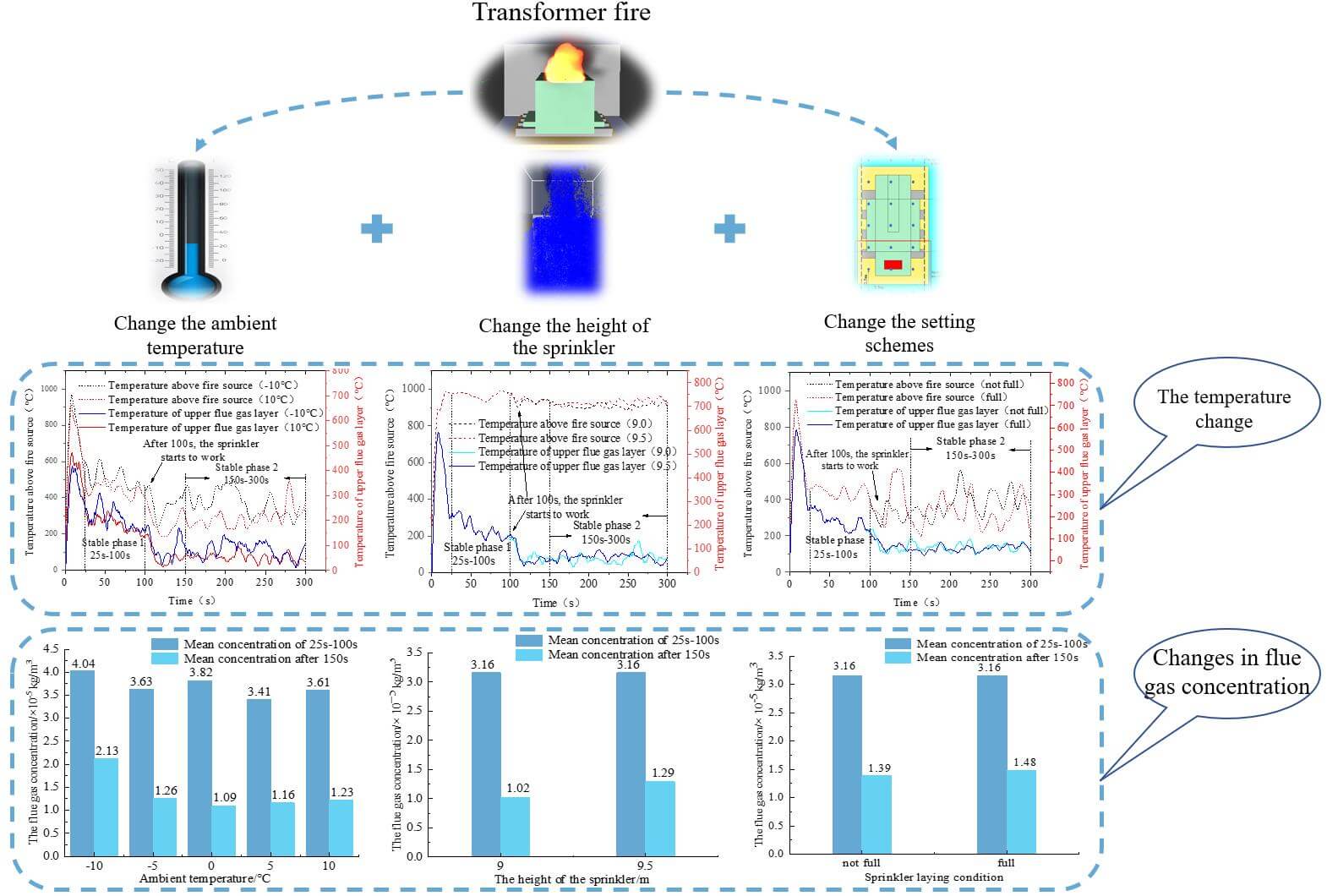 Open Access
Open Access
ARTICLE
Numerical Simulation Analysis of the Transformer Fire Extinguishing Process with a High-Pressure Water Mist System under Different Conditions
1 College of Building Environment Engineering, Zhengzhou University of Light Industry, Zhengzhou, 450001, China
2 Electric Power Research Institute, State Grid Henan Electric Power Company, Zhengzhou, 450052, China
3 Zhengzhou Key Laboratory of Electric Power Fire Safety, Zhengzhou, 450001, China
4 State Grid Henan Electric Power Corporation Maintenance Company, Zhengzhou, 450052, China
* Corresponding Author: Haowei Yao. Email:
(This article belongs to the Special Issue: Numerical Methods in Engineering Analysis, Data Analysis and Artificial Intelligence)
Computer Modeling in Engineering & Sciences 2023, 136(1), 733-747. https://doi.org/10.32604/cmes.2023.022155
Received 21 May 2022; Accepted 05 September 2022; Issue published 05 January 2023
Abstract
To thoroughly study the extinguishing effect of a high-pressure water mist fire extinguishing system when a transformer fire occurs, a 3D experimental model of a transformer is established in this work by employing Fire Dynamics Simulator (FDS) software. More specifically, by setting different parameters, the process of the high-pressure water mist fire extinguishing system with the presence of both diverse ambient temperatures and water mist sprinkler laying conditions is simulated. In addition, the fire extinguishing effect of the employed high-pressure water mist system with the implementation of different strategies is systematically analyzed. The extracted results show that a fire source farther away from the centerline leads to a lower local temperature distribution. In addition, as the ambient temperature increases, the temperature above the fire source decreases, while the temperature and the concentration of the upper flue gas layer both decrease. Interestingly, after the high-pressure water mist sprinkler begins to operate, both the temperature distribution above the fire source and the concentration of the flue gas decrease, which indicates that the high-pressure water mist system plays the role of cooling and dust removal. By comparing various sprinkler laying methods, it is found that the lower sprinkler height has a better effect on the temperature above the fire source, the temperature of the upper flue gas layer, and the concentration of the flue gas. Moreover, when the sprinkler is spread over the whole transformer, the cooling effect on both the temperature above the fire source and the temperature of the upper flue gas layer is good, whereas the change in the concentration of the flue gas above the fire source is not obvious compared to the case where the sprinkler is not fully spread.Graphic Abstract

Keywords
Cite This Article
 Copyright © 2023 The Author(s). Published by Tech Science Press.
Copyright © 2023 The Author(s). Published by Tech Science Press.This work is licensed under a Creative Commons Attribution 4.0 International License , which permits unrestricted use, distribution, and reproduction in any medium, provided the original work is properly cited.


 Submit a Paper
Submit a Paper Propose a Special lssue
Propose a Special lssue View Full Text
View Full Text Download PDF
Download PDF Downloads
Downloads
 Citation Tools
Citation Tools